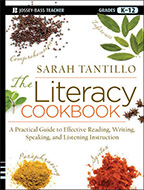This page is still a work-in-progress, which probably tells you something about my relationship with logic. In any case, we all have to start somewhere....
1. When READING, model your thought process via think-aloud and read-aloud strategies.
2. In WRITING, students' ideas should FLOW LOGICALLY. This logical flow requires TRANSITIONS. For my teacher friends who are frustrated with textbooks that define "transitions" merely as "time and order words," resulting in robotic student writing that relies heavily on "first, second, and third," here are links to Web pages that provide a more nuanced explanation of what transitions are and how they work:
http://www.virtualsalt.com/transits.htm
http://www.studygs.net/wrtstr6.htm
 3. In CLASS DISCUSSIONS, the questions we ask determine how much students actually have to think. So ask "WHY?" frequently. This technique forces students to express insights/inferences and explain their thinking. Push for EVIDENCE to support their ARGUMENTS. Check out the Questioning and the Argument vs. Evidence pages for more ideas. See also Chapter 4 in The Literacy Cookbook on how to train students how to listen.
3. In CLASS DISCUSSIONS, the questions we ask determine how much students actually have to think. So ask "WHY?" frequently. This technique forces students to express insights/inferences and explain their thinking. Push for EVIDENCE to support their ARGUMENTS. Check out the Questioning and the Argument vs. Evidence pages for more ideas. See also Chapter 4 in The Literacy Cookbook on how to train students how to listen.
| OTHER RECOMMENDED READING: |
| Lemov, Doug. Teach Like a Champion 2.0: 62 Techniques that Put Students on the Path to College. San Francisco: Jossey-Bass, 2015. |
| Zwiers, Jeff. Building Academic Language: Essential Practices for Content Classrooms. San Francisco: Jossey-Bass, 2008. |
To conclude (wink), this page will continue to evolve. Please feel free to Email requests for information or suggestions for what belongs on this page (sarahtantillo@literacycookbook.com). Thanks, ST

